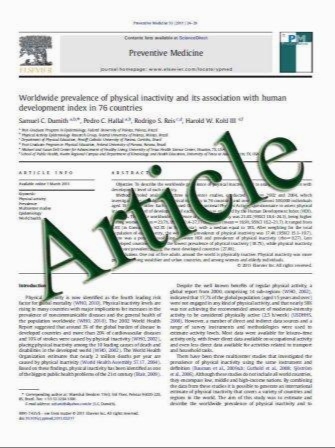Low bone mineral density is associated with increased mortality in elderly men: MrOS Sweden
- نوع فایل : کتاب
- زبان : انگلیسی
- مؤلف : H. Johansson & A. Odén & J. Kanis & E. McCloskey & M. Lorentzon & ض. Ljunggren & M. K. Karlsson & E. Orwoll & إ. Tivesten & C. Ohlsson & D. Mellstrِ
- چاپ و سال / کشور: 2010
Description
Summary We studied the nature of the relationship between bone mineral density (BMD) and the risk of death among elderly men. BMD was associated with mortality risk and was independent of adjustments for other co-morbidities. A piecewise linear function described the relationship more accurately than assuming the same gradient of risk over the whole range of BMD (p=0.020). Low BMD was associated with a substantial excess risk of death, whilst a higher than average BMD had little impact on mortality. Introduction Previous studies have demonstrated an association between low BMD and an increased risk of death among men and women. The aim of the present study was to examine the pattern of the risk inmen and its relation to co-morbidities. Methods We studied the nature of the relationship between BMD and death among 3,014 elderly men drawn from the population and recruited to the MrOS study in Sweden. Baseline data included general health questionnaires, life style questionnaires and BMD measured using DXA. Men were followed for up to 6.5 years (average 4.5 years). Poisson regression was used to investigate the relationship between BMD, co-morbidities and the hazard function of death. Results During follow-up, 382men died (all-cause mortality). Low BMD at all measured skeletal sites was associated with increased mortality. In multivariate analyses, the relationship between BMD and mortality was non-linear, and a piecewise linear function described the relationship more accurately than assuming the same gradient of risk over the whole range of BMD (p=0.020). Conclusions Low BMD is associated with a substantial excess risk of death compared to an average BMD, whereas a higher than average BMD has a more modest effect on mortality. These findings, if confirmed elsewhere, have implications for the constructing of probability-based fracture risk assessment tools.
Osteoporos Int (2011) 22:1411–1418 DOI 10.1007/s00198-010-1331-1 Received: 2 March 2010 / Accepted: 4 June 2010 / Published online: 29 June 2010


